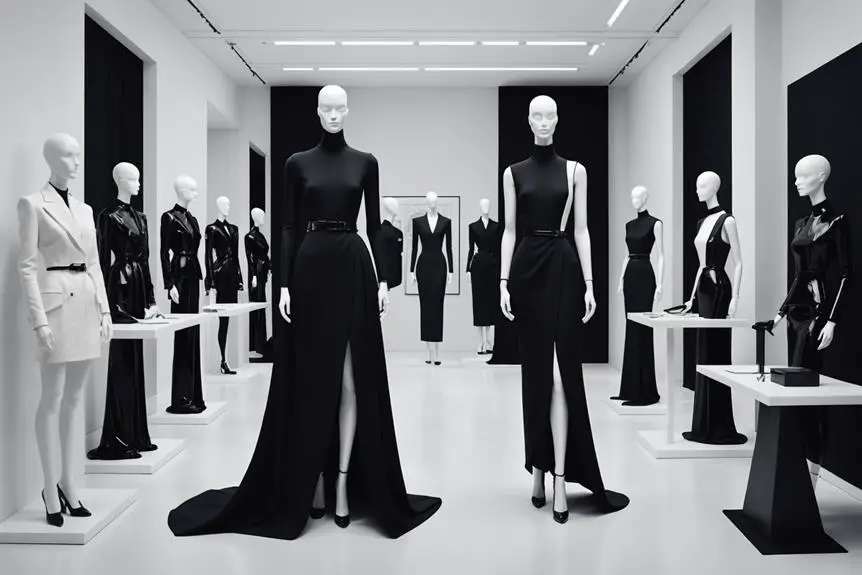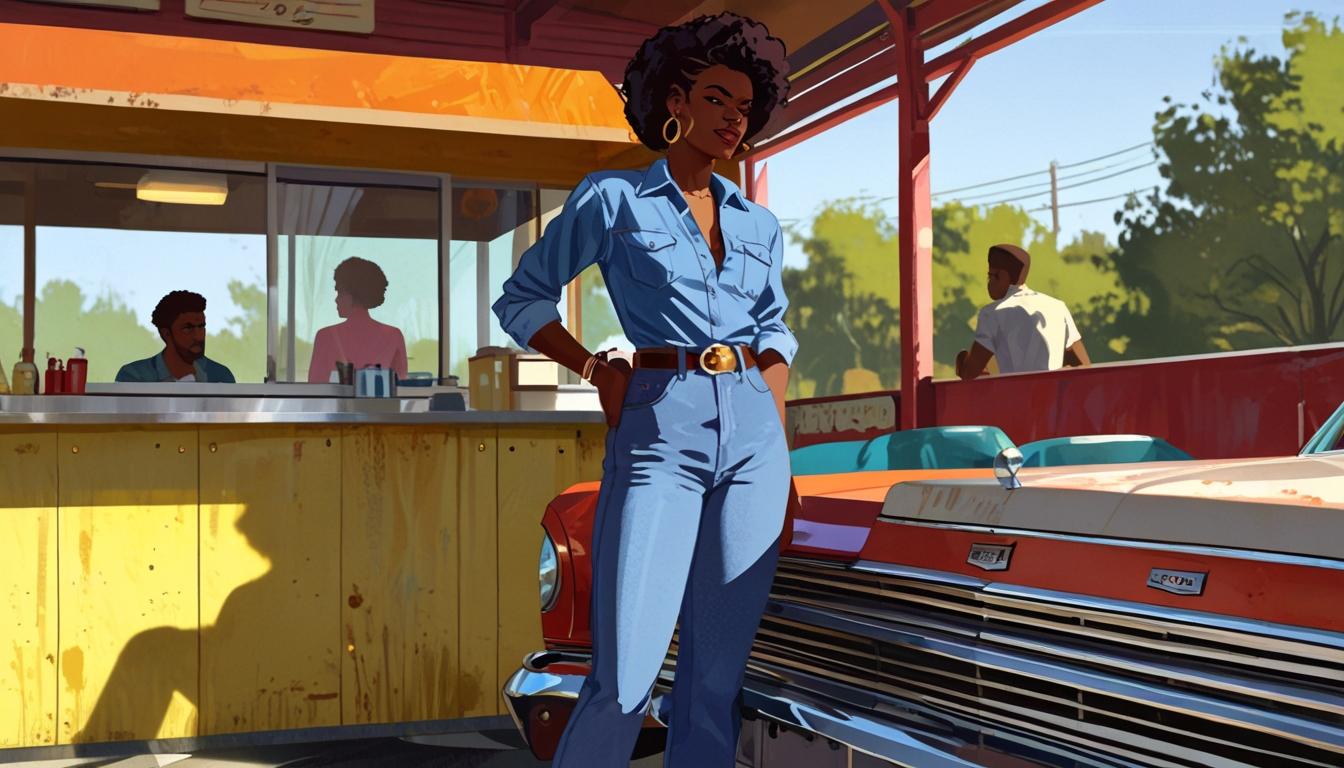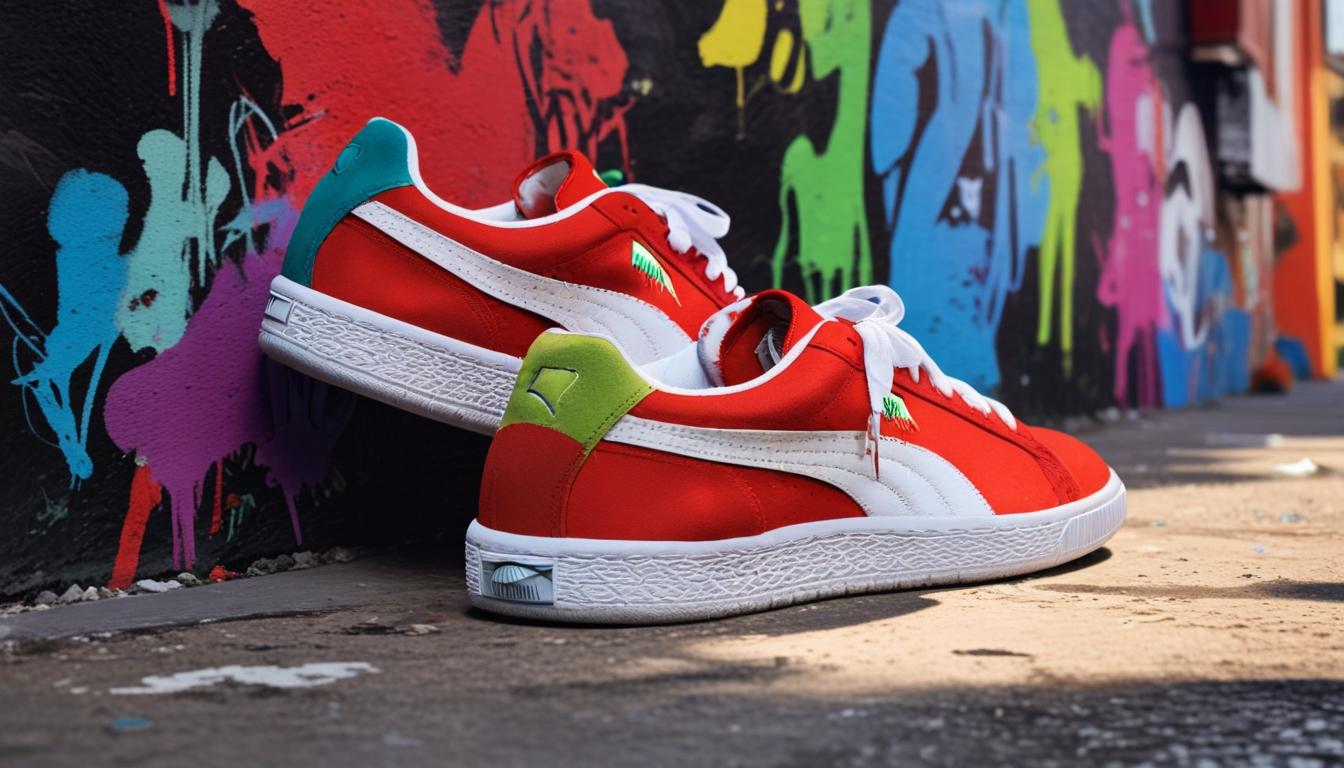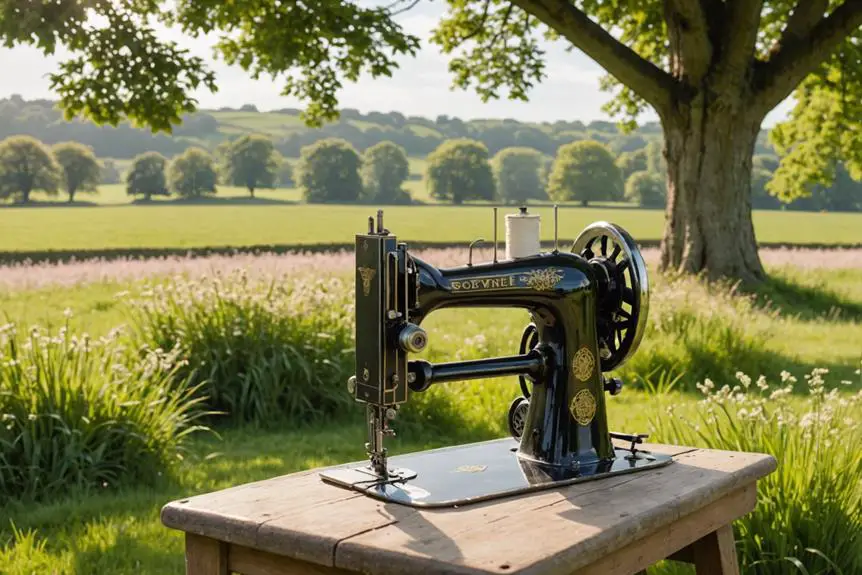The House of Balenciaga has been shaped by a series of innovative designers. Founded by Cristóbal Balenciaga in 1919, he revolutionized women's fashion with groundbreaking silhouettes. After the brand closed in 1968, it was revived in 1986, with Nicolas Ghesquiére at the helm in 1997, who introduced modern aesthetics and iconic pieces. Alexander Wang followed briefly, focusing on urban styles. Since 2015, Demna Gvasalia has pushed boundaries with avant-garde designs and oversized silhouettes, keeping the brand fresh. Each designer has built on Balenciaga's legacy, combining tradition with contemporary creativity, and there's plenty more to uncover about this fascinating journey.
Historical Overview of Balenciaga
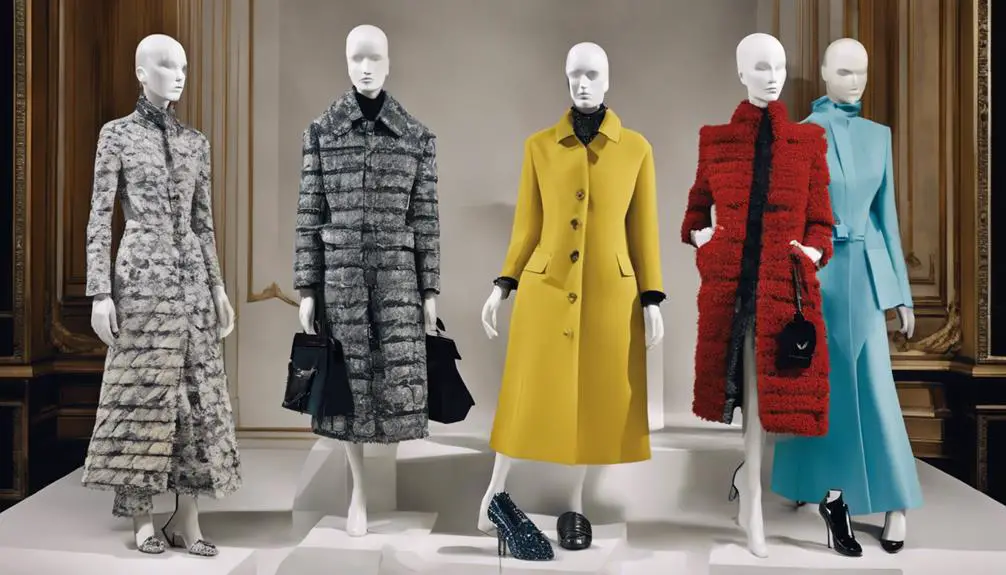
Cristóbal Balenciaga revolutionized the fashion industry when he founded his fashion house in 1919 in San Sebastián, Spain, before relocating to Paris in 1937 due to the Spanish Civil War. Known for his exquisite couture, Balenciaga quickly gained a reputation as a leader in innovative fashion, similar to how Fendi evolved through various logos and design changes over the decades.
During the 1950s, he became particularly famous for groundbreaking silhouettes like the sack dress and balloon jacket. These designs transformed the way women dressed, offering new shapes that emphasized elegance and comfort.
After Balenciaga's passing in 1972 and the closure of his fashion house in 1968, the brand entered a dormant period until it was revived in 1986 under new ownership. This revival set the stage for a fresh chapter in Balenciaga's story.
In 1997, Nicolas Ghesquiér was appointed as Creative Director, and he brought a youthful spirit to the luxury fashion house. Ghesquiér introduced iconic pieces like the Patchwork dress and the Motorcycle Lariat bag, which resonated with a new generation of fashion enthusiasts.
The brand's evolution didn't stop there. In 2015, Demna Gvasalia took over as Creative Director, marking a significant resurgence in popularity and influence within the luxury fashion market.
Under his guidance, Balenciaga embraced streetwear aesthetics, appealing to a broader audience while maintaining its couture roots. Balenciaga's journey reflects a rich history of innovation, creativity, and adaptation, making it a cornerstone of contemporary fashion.
Key Designers and Their Impact
Balenciaga's legacy is shaped by a series of visionary designers who each brought their unique flair to the brand. Starting with Cristóbal Balenciaga himself, he revolutionized women's fashion in the 1950s, introducing innovative silhouettes like the sack dress and balloon hems. His emphasis on fabric manipulation over traditional sketches laid the foundation for the house's creative direction.
In 1997, Nicolas Ghesquière took the reins as Creative Director and breathed new life into Balenciaga. His first collection featured iconic pieces like the Motorcycle Jacket and Patchwork dress, helping position the brand as a leader in contemporary luxury fashion. The youthful and edgy vibe he infused into the collections appealed to a wider audience.
Next came Alexander Wang, who served as Creative Director from 2013 to 2015. His focus on urban and streetwear aesthetics drew in a younger demographic, considerably increasing the brand's visibility in the fashion world. Wang's approach marked a shift towards a more accessible yet high-fashion style.
Then, in 2015, Demna Gvasalia became the Artistic Director, pushing boundaries with avant-garde designs and daring collaborations. Under his leadership, Balenciaga solidified its status as Kering's fastest-growing brand by 2018.
Each designer's unique vision hasn't only maintained the core values established by Cristóbal Balenciaga but also guaranteed the brand's enduring influence in the ever-evolving landscape of fashion. Their contributions continue to inspire and shape the future of haute couture.
Evolution of Design Philosophy
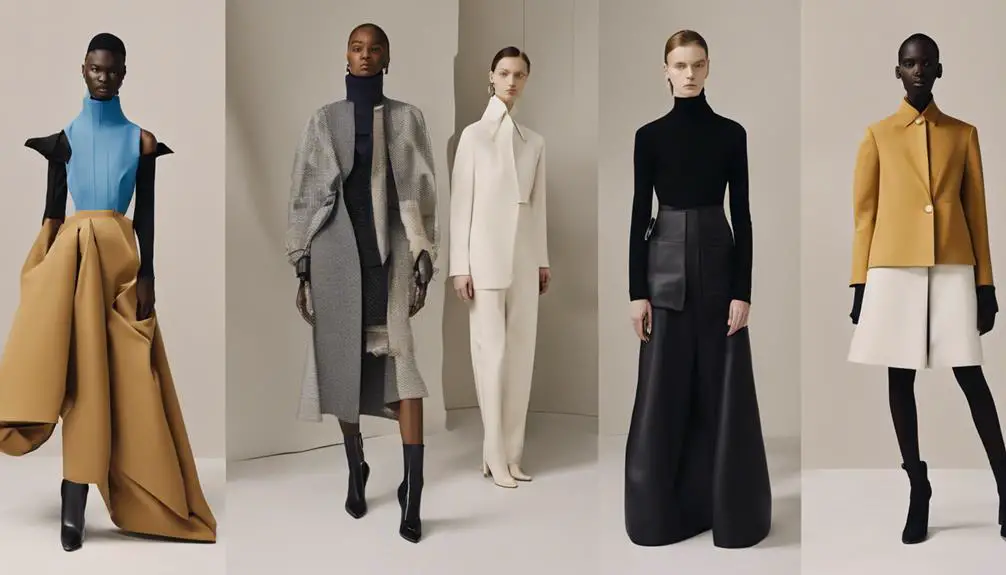
Throughout its history, Balenciaga has continually evolved its design philosophy to reflect the changing landscape of fashion. Founded by de Cristobal Balenciaga on Avenue George V, the couture house made its mark by emphasizing fabric manipulation over sketches. This innovative approach showcased Balenciaga's mastery of clothing construction, allowing the fabric to guide the design process.
In the 1950s, Balenciaga was born into a world of unique silhouettes, introducing iconic pieces like the sack dress and balloon hems that revolutionized women's fashion. This legacy of creativity continued as the brand embraced new creative directors who infused fresh ideas into the house. Under their guidance, Balenciaga introduced architectural shapes and bold colors, merging traditional craftsmanship with modern techniques.
Nicolas Ghesquière and Demna Gvasalia, notable figures in the brand's evolution, pushed boundaries with their avant-garde designs. They didn't shy away from experimenting with unique materials and textures, ensuring that Balenciaga remained relevant in an ever-changing fashion landscape. Their work highlighted a commitment to sustainability, further adapting the brand's philosophy to resonate with contemporary values.
Today, Balenciaga stands as a beacon of innovation, balancing its rich heritage with forward-thinking designs. The evolution of its design philosophy not only honors the past but also embraces the future, proving that the house's vision continues to inspire and challenge the norms of fashion.
Innovations in Fashion
As fashion constantly evolves, innovations play an essential role in shaping trends and redefining aesthetics. Cristóbal Balenciaga, a visionary designer, pioneered innovative silhouettes that transformed women's fashion in the 1950s. His iconic sack dress and tunic dress emphasized sculptural shapes instead of the traditional hourglass figure, allowing women to express themselves in new ways. Unique features like bracelet sleeves and balloon hems showcased his exceptional skill in fabric manipulation, giving garments a fresh structure.
Vintage fashion items, much like Balenciaga's creations, represent a significant chapter in the evolution of style and craftsmanship, reflecting the rich history of designers like Chanel's legacy.
Balenciaga's use of unconventional materials, such as gazar d'Abraham, was revolutionary. These materials allowed for the creation of designs that retained a lightness and fluidity, setting new standards in haute couture.
Under Nicolas Ghesquière's direction from 1997 to 2012, the Balenciaga brand experienced a revival. He introduced iconic pieces like the Patchwork dress and the Motorcycle Lariat bag, blending modern aesthetics with the house's historical craftsmanship.
Demna Gvasalia took the brand even further starting in 2015, pushing the boundaries of fashion with avant-garde designs. His oversized silhouettes and streetwear influences solidified Balenciaga's position as a leader in contemporary luxury fashion.
Through these innovations, the Balenciaga brand continues to thrive, inspiring future generations of designers and fashion enthusiasts alike. As you explore the innovations in fashion, remember how Balenciaga's legacy has shaped what we wear today, proving that creativity knows no bounds.
Cultural Influence and Legacy
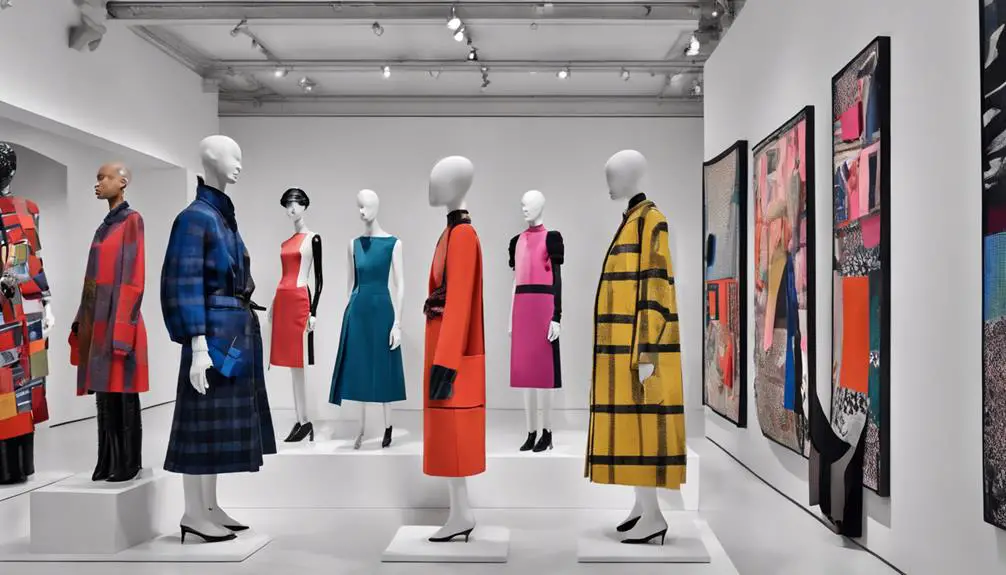
The cultural influence and legacy of Cristóbal Balenciaga resonate deeply within the fashion world and beyond. His innovative designs, like the sack dress and balloon shapes, changed women's fashion in the 1950s, inspiring countless designers and fashion movements.
The House of Balenciaga has skillfully maintained its relevance through various creative directors, blending avant-garde aesthetics with contemporary trends that captivate today's audiences. Significantly, Balenciaga's commitment to unique craftsmanship parallels that of other iconic brands, such as Ralph Lauren, which has also shaped fashion through its various sub-brands and cultural impact vintage Ralph Lauren identification.
Here are some key aspects of Balenciaga's cultural legacy:
- Influence on Designers: Cristóbal's techniques inspired greats like Hubert de Givenchy, who built on Balenciaga's unique silhouettes.
- Craftsmanship: The brand's dedication to quality and artistry continues to inspire emerging designers and haute couture collections.
- Celebrity Collaborations: Icons like Kim Kardashian wear Balenciaga, showcasing its modern appeal and cultural significance.
- Connection to Communities: The brand's presence in media, like HBO Max's "Legendary," highlights its ties to ballroom culture and the LGBTQ+ community.
Balenciaga's commitment to craftsmanship and innovation has established a legacy that endures. The brand's ever-evolving identity bridges historical influence with modern trends, making it a leader in contemporary fashion.
As Balenciaga continues to redefine luxury, you can see its impact on both the runway and everyday life. This legacy not only shapes the fashion landscape but also reflects the dynamic relationship between art, culture, and society, ensuring that Balenciaga remains an essential part of fashion history for generations to come.
